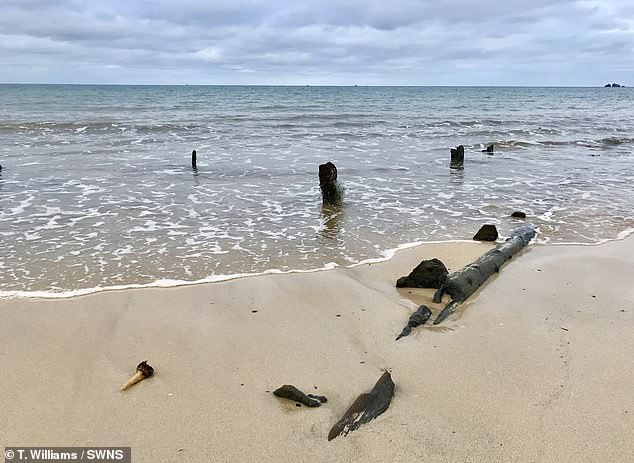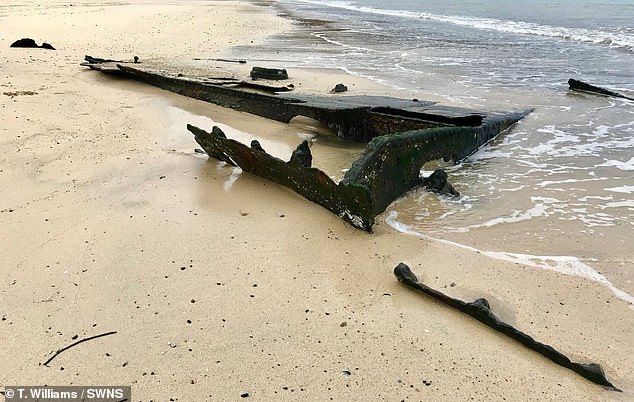Wrecks of three ships lost to the sea within half an hour of each other during a violent storm in 1893 are revealed by unusually low tides in Cornwall

Remains seen during low tide last week on Carbis Bay
Unusually low tides at a beach in north Cornwall beach briefly revealed the remains of shipwrecks from 125-years-ago.
The remains of three coal ships were spotted at Carbis Bay.

Images of the ships were shared by @legolostatsea on Twitter, and it’s the first time the wreckage has been revealed since November 2017.
The wrecks are thought to be the remains of three ships that were destroyed within a half hour period during a raging storm on November 18, 1893.
One of the ships, the Cintra, was on her way from Newport to Dartmouth and was battered by the
Five members of the Cintra’s crew were rescued by a buoy, but seven drowned. One member of the crew is said to have hung onto the rigging for over an hour.
Little apart from the ships’ hulls are left. The anchor of the Cintra was recovered from the seabed in 1959 and is today on display on Smeaton’s Pier in St Ives.
The other two ships were the Bessie and Vulture, both

The boilers of the Vulture were once a playground for children until they were removed to use as scrap in the Second World War.
The wreckage of the three ships have since been submerged and are no longer visible.
A number of other ships were lost on the same night and have been found in other parts of Cornwall. The Hampshire, which lost its entire crew








